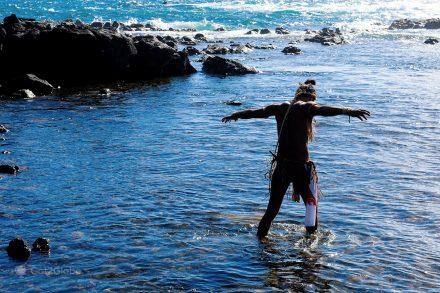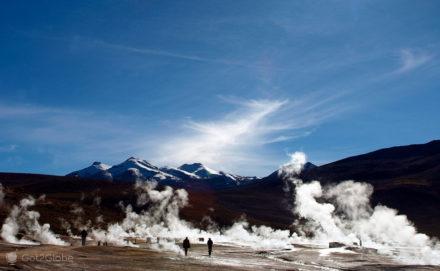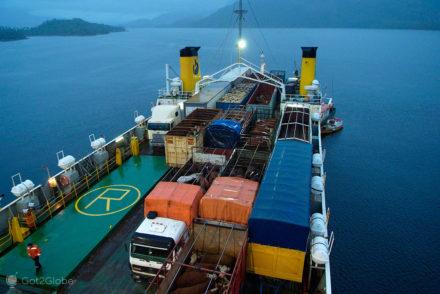





VISA AND OTHER PROCEDURES
Portuguese citizens do not need a visa for tourist visits and obtain a stay permit for 90 days.
HEALTH CARE
Chile does not require any particular vaccinations to grant entry to visitors. There is no malaria in the country.
Do not go up to the highest lands of the Andean mountain range in an abrupt way – a gradual journey of at least 1 or 2 days – in order to avoid altitude sickness.
For more information on traveling health, see the Health Portal of the Ministry of Health and Tropical and Traveler Medicine Clinic. In FitForTravel find country-specific health and disease prevention advice (in English).
TRIP TO CHILE
fly with the TAP (tel.: 707 205 700) to Rio de Janeiro and, from this city, with the Lan Chile, to Santiago de Chile for from €1.000.
INTERNAL FLIGHTS
The airline Lan Chile operates almost all domestic flights. The inexistence of competing companies means that flight prices remain considerably high. Thanks to the lack of competition, it will be difficult to find a domestic flight in Chile for less than €100, even for the shortest routes.
Lan also regularly flies to Easter Island, the furthest Chilean territory in South America and the most isolated island in the world. The normal price is around €400 but you can find flights for less during the low season and in certain promotional periods.
the companies ATA e Lassa they also fly to the Juan Fernandez archipelago, a group of fascinating islands – including Robinson Crusoe – 600 km from Valparaíso, on the Chilean coast. The return flight costs around €500.
CAR RENTAL
It is possible to rent a car at airports and other service desks. rent a car of the main Chilean cities. Rented vehicles will have a minimum cost of €45 to €55 per day for small economy cars, sometimes with only 150 or 200 km a day included, to which €0,50 – €0,60 per liter of gasoline must be added , a little less for diesel.
Chilean main roads are of a very acceptable quality. If you plan to leave these roads and go through secondary lanes, rent a jeep or, at the very least, a four-wheel-drive vehicle. Chile's famous gravel roads can become very slippery after a long rain or snowfall, not to mention possible ice in the south of the country during the colder months.
Chile's two main roads, the Carretera Austral and the Panamericana run through a large part of the country. The last one has undergone improvements but is equipped with tolls that charge €1 to €2 for a given segment or a fixed amount for the exit to a particular city.
Chile guarantees acceptable safety conditions for those who drive cars, motorbikes and even bicycles. Traffic in cities is substantially more organized and smoother than in Argentina and Brazil. Driving on the Panamericana and Carretera Austral is also relatively quieter. across the country.
TRUCK
Chile is covered by a considerable fleet of long-haul buses. You can find buses to virtually every region, except the most remote ones like the Patagonian fjords, the southern tip of Tierra del Fuego and the ice field area. More information and reservations at Omnilines. Almost all companies offer regular seating and what they call salon bed, where passengers can sleep during the trip for a price around 30% higher. Bus fares range from €4 from Santiago de Chile to Valparaíso (2 hours) to almost €100 from Santiago to far away Punta Arenas (60 hours).
SHIP
There are several shipping companies that provide ferry trips, mainly in the section of Chile that is more broken up by fjords and canals, south of Puerto Montt.
By way of example, the NAVIMAG started to admit foreign travelers aboard its cruise ships that travel the Patagonian fjords between Puerto Natales (near the Torres del Paine), Puerto Montt and vice versa. These routes cost approximately €290 per passenger/bed, for 3 nights of sailing.
It has also operated the Puerto Montt-Puerto Cachabuco route for some time. Be aware that if you travel through Chile in a two- or four-wheel vehicle, ferries from NAVIMAG and some other companies can also transport you on different routes.
Other possible routes are: Puerto Montt – Chaitén; La Arena – Puelche; Hornopirén – Caleta Gonzalo; Pargua – Chiloé Island; Chiloé – Chaiten; Chiloé – Puerto Cachabuco; Puerto Ibañez – Chile Chico; Punta Arenas – Tierra del Fuego; Puerto Williams – Ushuaia.
are operated by Transmarchlay; Catamarans del Sur; Naviera Sotramin; South Sea and Austral Broom Transhiper
TRAIN
Chile's rail network has recently been remodeled and expanded but continues to prove uncompetitive compared to buses. It's slower, more expensive and, in most cases, just as or less comfortable. There are international rail connections with Bolivia (Arica – La Paz) and Peru (Arica – Tacna). More information at EFE.
The long and narrow Chile extends over a wide latitude. As such, it has different weather patterns, from north to south. Norte Grande and Norte Chico: despite being desert or semi-desert, these regions and, in particular, the Atacama Desert, present moderate average temperatures, from 15ºC to 23ºC. Bear in mind, however, that the higher areas near the Andean mountain range and the border with Argentina can be much cooler. Central Chile and Los Lagos District: it is summer in this area and to the south, from December to February. The wettest season is from May to August. Chiloe, Aisen, Magallanes and Tierra del Fuego: visit only during late spring, summer and early autumn if you don't want to suffer from temperatures well below 0ºC, winds, rains and/or lashing and incessant snow. Even during these periods, it is not guaranteed that you will always feel comfortable.
The local currency is the Chilean Peso (CLP). Payments with the most popular credit and debit cards are possible in the most modern establishments, especially in the largest towns.
ACCOMMODATION
The scope ranges from inns and guest houses (hospedajes) for backpackers, with a daily rate of 20€ in a double room, to sophisticated resorts located in the most touristic places in the country, such as the Explora chain, where 4 days with all-inclusive can cost 3 or 4 thousand euros.
FOOD
Meals from €3 or €4 in traditional market stalls and restaurants to hundreds of euros in the most sophisticated restaurants in Santiago.
INTERNET
Even taking into account its size, endless latitude and vast remote territory, Chile is served by a very acceptable Internet network with Internet houses even in the smallest towns. The price for navigation ranges from €1.50 to €3 per hour. The further away from large towns and especially the further south, the slower the Internet.